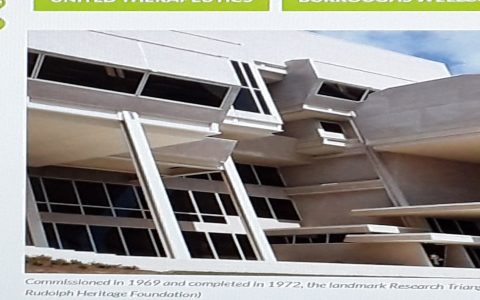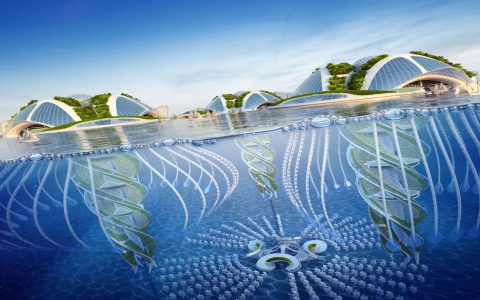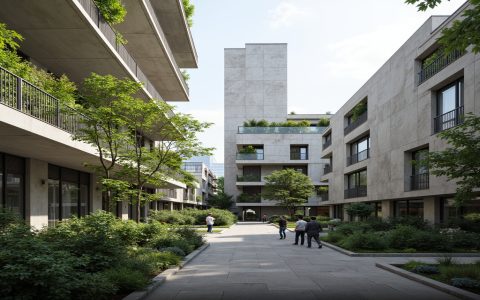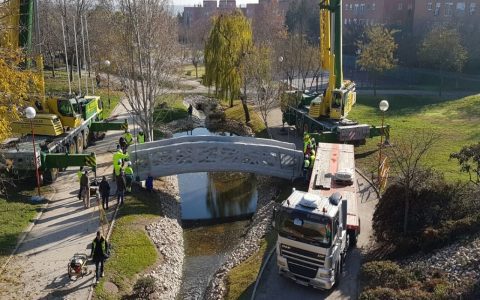Historical Context
Constructed between 1969 and 1972, the Burroughs Wellcome Building served as the US headquarters for the British pharmaceutical company Burroughs Wellcome & Co. Located in Research Triangle Park (RTP), North Carolina, it was commissioned during the park's formative years, symbolizing the convergence of science, industry, and forward-thinking design.
Architectural Significance
Designed by renowned modernist architect Paul Rudolph, the building is a prime example of Brutalist architecture. Its most distinctive feature is a stepped-terrace structure composed of interlocking hexagonal modules. This complex geometry maximized exterior surface area for offices and labs while creating an interior filled with varied, multi-level spaces interconnected by bridges and stairs – a deliberate design philosophy termed "architecture of participation" to encourage interaction. The extensive use of bush-hammered concrete defines its bold aesthetic.
Interesting Facts Explained Simply
- "Sci-Tech Cathedral": Its dramatic stepped form, narrow "nave," and complex spatial experience led to it being nicknamed the "Sci-Tech Cathedral," reflecting its ambitious scale and purpose.
- Laboratory Pioneering: Rudolph integrated state-of-the-art pharmaceutical laboratories directly into the sculptural massing, a less common approach at the time, prioritizing both scientific function and architectural expression.
- Landscape Integration: The terraced design naturally cascaded down a hillside, minimizing its visual bulk and attempting to harmonize with the surrounding woodland landscape of RTP.
- Controversial Preservation: Despite its architectural significance and listing on the National Register of Historic Places (2015), major alterations began in 2010 under new owner United Therapeutics. Significant internal spaces and original finishes were removed or covered. A major 2023 renovation further transformed the structure, sparking debate about balancing preservation with contemporary reuse.
- Adaptive Reuse Champion: While the extent of alterations is debated, the building's survival and continued use by United Therapeutics represent a significant, albeit complex, example of adapting a challenging Brutalist icon for modern needs.







